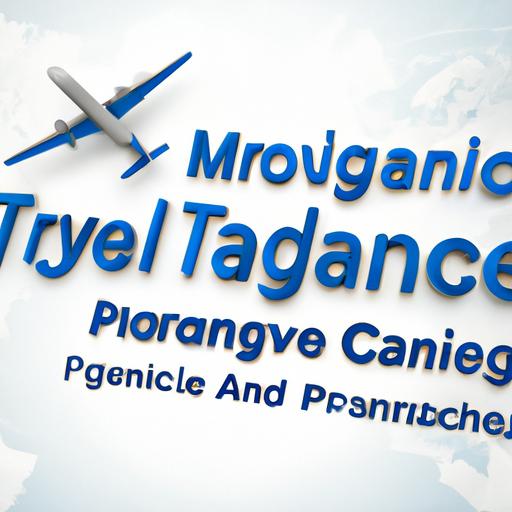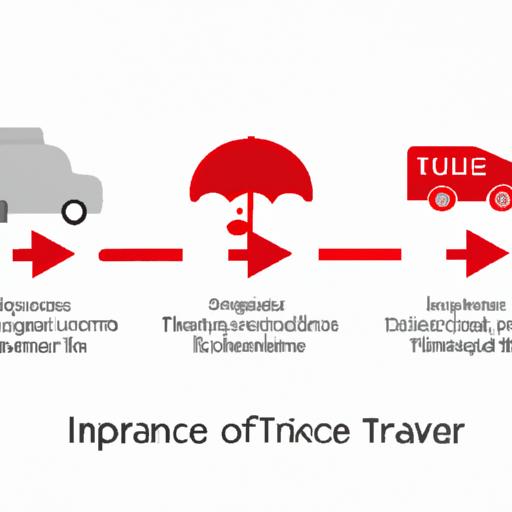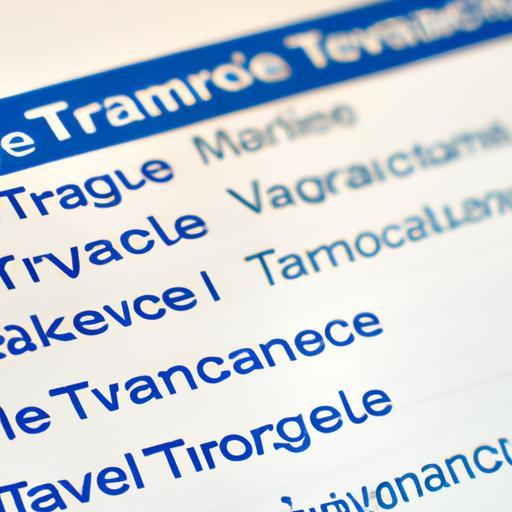In the fast-paced world of travel, finding the perfect insurance coverage can often feel like trying to catch a moving target. With prices that fluctuate as swiftly as the changing winds, traditional travel insurance models can leave adventurers feeling unsure and out of control. However, with the rise of dynamic pricing models for travel insurance, there may be a new solution on the horizon. Let’s explore the ins and outs of this innovative approach and how it could revolutionize the way we protect ourselves on our journeys.
Table of Contents
- 1. The Evolution of Travel Insurance Pricing
- 2. Understanding the Benefits of Dynamic Pricing
- 3. How Dynamic Pricing Models Impact Travel Insurance Costs
- 4. Analyzing the Factors that Influence Dynamic Pricing
- 5. The Role of Technology in Implementing Dynamic Pricing Models
- 6. Tips for Finding the Best Deals on Travel Insurance through Dynamic Pricing
1. The Evolution of Travel Insurance Pricing
Travel insurance pricing has seen a significant evolution over the years, adapting to changes in the industry and consumer demands. One key factor driving this evolution is the increase in travel risks, such as natural disasters, political instability, and health emergencies.
Advancements in technology have also played a role in shaping travel insurance pricing. Insurers now have access to more data and analytics, allowing them to better assess risks and customize policies for individual travelers. This has led to more personalized pricing models, where factors like destination, duration of the trip, and the traveler’s age and medical history are taken into account. As a result, travelers have more options to choose from and can find a policy that best suits their needs and budget.

2. Understanding the Benefits of Dynamic Pricing
Dynamic pricing is a strategy that allows businesses to adjust prices in real-time based on various factors. This approach has become increasingly popular among retailers and online businesses due to its numerous benefits. By implementing dynamic pricing, companies can improve their competitiveness, maximize revenue, and better meet consumer demand. This pricing model also enables businesses to react quickly to market changes, ensuring that they stay ahead of the competition.
One of the key advantages of dynamic pricing is its ability to increase profitability. By analyzing data such as customer behavior, competitor pricing, and market trends, companies can optimize prices to maximize profits. Dynamic pricing also helps businesses reduce excess inventory and minimize stockouts by adjusting prices to match supply and demand. Ultimately, this strategy allows companies to improve their bottom line and create a more efficient pricing model that benefits both businesses and consumers.
3. How Dynamic Pricing Models Impact Travel Insurance Costs
Dynamic pricing models have revolutionized the travel insurance industry by taking into account various factors that can impact the cost of coverage. By utilizing sophisticated algorithms, insurance companies are able to adjust prices based on real-time data, offering consumers more tailored and competitive pricing options.
Some of the key ways these dynamic pricing models impact travel insurance costs include:
- Travel destinations: The location you are traveling to can greatly influence the cost of insurance, with some regions being deemed higher risk than others.
- Travel dates: Peak travel seasons and popular holidays can result in higher insurance costs due to increased demand.
- Personal factors: Individual factors such as age, pre-existing medical conditions, and the level of coverage desired can also affect the price of travel insurance.
4. Analyzing the Factors that Influence Dynamic Pricing
When it comes to dynamic pricing, there are several key factors that influence how prices are set for products or services. One of the most important factors is demand - when demand is high, prices tend to rise, and when demand is low, prices can decrease. This is often seen in industries such as airlines and hotels, where prices fluctuate based on the time of year, availability, and consumer preferences. Additionally, competition plays a significant role in dynamic pricing. Companies will often adjust their prices to stay competitive with other businesses in the market, leading to constant changes in pricing strategies.
Another factor that influences dynamic pricing is consumer behavior. By analyzing data on customer buying patterns, companies can identify trends and adjust their prices accordingly. For example, if a particular product is selling well, a company may increase the price to capitalize on high demand. Conversely, if sales are slow, prices may be lowered to attract more customers. the factors that influence dynamic pricing are complex and ever-changing, requiring companies to stay vigilant and adapt their strategies to remain competitive in the market.
5. The Role of Technology in Implementing Dynamic Pricing Models
Advancements in technology have revolutionized the way businesses implement dynamic pricing models. With the help of innovative software and algorithms, companies can now analyze massive amounts of data in real-time to adjust prices dynamically based on various factors such as demand, competitor pricing, and customer behavior.
By leveraging technology, businesses can also personalize pricing strategies to individual customers, providing tailored offers and promotions that are more likely to resonate with specific segments of their target audience. Furthermore, the use of automated pricing tools can streamline the pricing process, saving time and resources while maximizing revenue potential. In today’s fast-paced market, cannot be overstated.
6. Tips for Finding the Best Deals on Travel Insurance through Dynamic Pricing
When searching for the best deals on travel insurance through dynamic pricing, it’s important to keep a few key tips in mind. Consider the following strategies to help you navigate the world of fluctuating prices:
- Be flexible with your travel dates to take advantage of lower prices during off-peak times.
- Compare prices across multiple insurance providers to ensure you’re getting the best deal.
- Sign up for price alerts to stay informed of any drops in prices for your desired coverage.
dynamic pricing models for travel insurance offer a flexible and personalized approach to meeting the needs of individual travelers. By utilizing real-time data and sophisticated algorithms, insurers can tailor pricing to reflect a traveler’s specific circumstances and risk profile. This innovative approach ensures that travelers can access the right coverage at the right price, enhancing their overall experience and peace of mind. As the travel industry continues to evolve, dynamic pricing models are likely to become increasingly prevalent, revolutionizing the way travelers engage with insurance. So, next time you plan your trip, remember to explore the dynamic pricing options available for your travel insurance needs. Safe travels!
